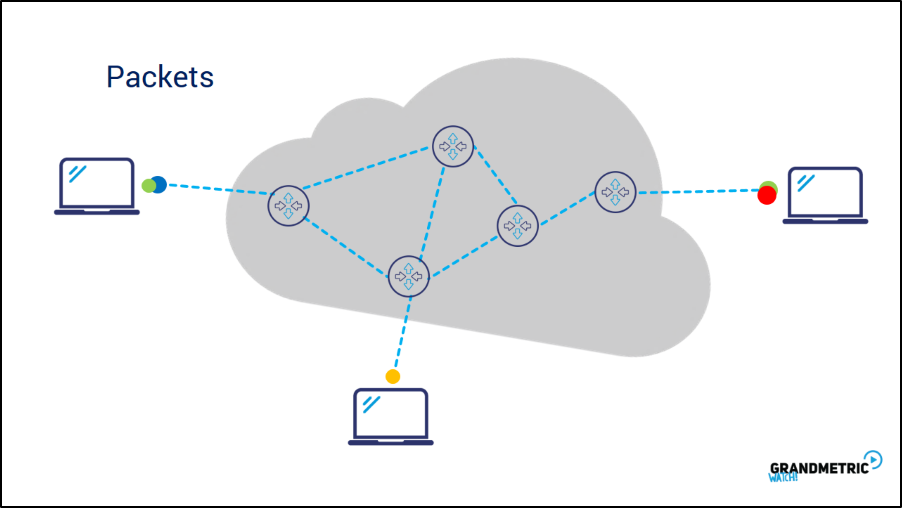IP Addresses, Packets, and Routing
IP Addresses

An IP (Internet Protocol) Address is a numerical label assigned to each device connected to a computer network that uses the IP for communication. It serves two functions: host or network interface identification and location addressing.
There are two primary types of IP address formats used: IPv4 and IPv6.
IPv4
Internet Protocol version 4 (IPv4) defines an IP address as a 32-bit number. It consists of four sets of numbers from 0 to 255, separated by three dots. The number is used to identify a website on the internet. For example, the IP address of njit.edu is 128.235.251.10.The image to the right provides an example of the breakdown of an IPv4 address.
IPv6
Internet Protocol version 6 (IPv6) is a newer version, using 128 bits for the IP address. The purpose of IPv6 allows for more unique IP address identifiers to be created. The address format is quite different than the IPv4 version. Using a hexadecimal notation, here is an example of the format: 3FFE:F200:0234:AB00:0123:4567:8901:ABCDPackets

A packet is a small segment of a larger message sent over a network, such as the internet. Data sent over computer networks are divided into packets. Similar to a real life package, information on the internet gets from one place to another via a packet.
Data travels in a less direct fashion, meaning it does not follow a fixed path. Like cars on the road, traffic congestion may cause data to follow a different route each time it travels.Packet switching allows packets from multiple computers to travel over the same wires. This enables multiple connections to take place over the same networking equipment at the same time. The result of this allows billions of devices to exchange data on the internet at the same time, rather than just a handful of devices.
The image above illustrates how a packet is sent from one place to another, through an indirect path.
Routing
 Routing is the process of choosing a path for traffic in a network or across multiple networks.
Routing is performed in many types of network, including computer networks, such as the internet,
and circuit-switched networks, such as the public switched telephone network (PSTN).
Routing directs network packets from their source toward their destination through network nodes
by specific packet forwarding mechanisms. Packet forwarding is the transit of network packets
from one network interface to another. Routing often refers to IP routing, which assumes that network
addresses are structured and similar addresses imply proximity within the network.
Routing has become dominant in addressing on the internet.
Routing is the process of choosing a path for traffic in a network or across multiple networks.
Routing is performed in many types of network, including computer networks, such as the internet,
and circuit-switched networks, such as the public switched telephone network (PSTN).
Routing directs network packets from their source toward their destination through network nodes
by specific packet forwarding mechanisms. Packet forwarding is the transit of network packets
from one network interface to another. Routing often refers to IP routing, which assumes that network
addresses are structured and similar addresses imply proximity within the network.
Routing has become dominant in addressing on the internet.